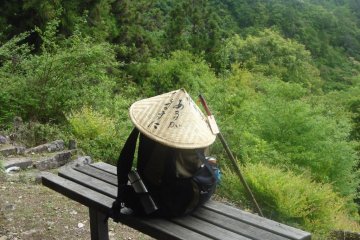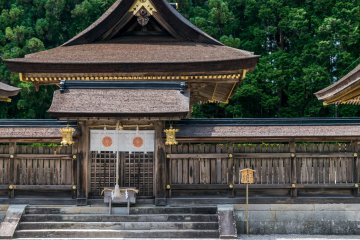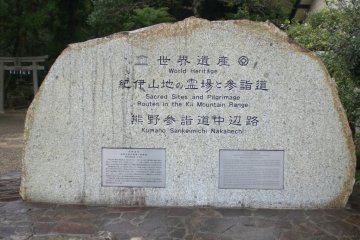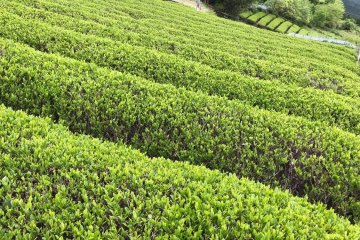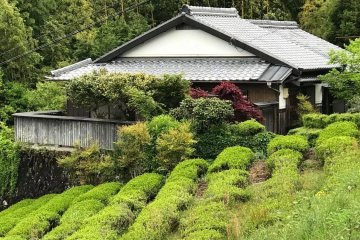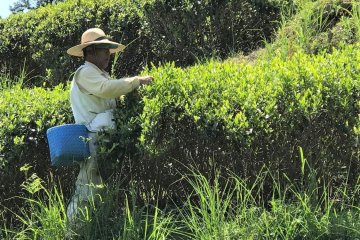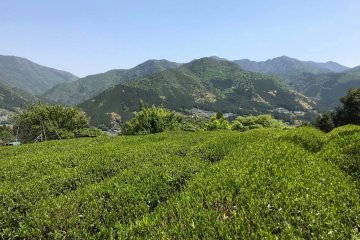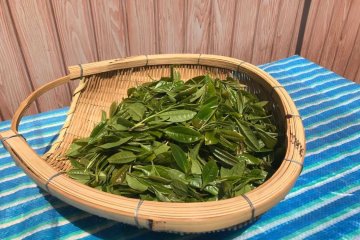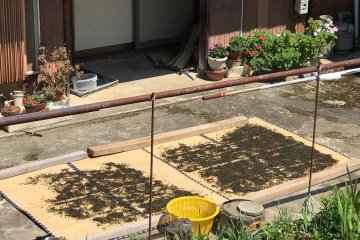Living in a village near Hongu on the Kumano Kodo trail, I have watched my neighbors pick tea leaves every year at the beginning of May. This year I went out and picked some leaves myself.
The first week of May is tea leaves picking season here. It is Golden Week too and many family members who now live in Osaka, Nagoya, or elsewhere in Japan come back to their home village to help their grandparents with the leaves picking. I can hear the happy chatter of the people in the tea plantations located all around this village.
It takes time to empty one bush, not to mention row upon row of tea bushes. We pick only the young fresh leaves and collect them in baskets typically tied with a rope on the waist. Traditionally these were bamboo baskets but nowadays there is also the plastic-type.
The tea leaves harvested in the vicinity of Hongu - in Fushiogami Village, Hosshinmon Village, Ippon-matsu Village, and Kawayu Village - are sold under the name "Otonashi-cha". This 'brand name' was taken from the name of the river, Otonashi River (No-Sound River), which flows through this area.
There are said to be close to 50 households, possibly more, who still engage in growing and harvesting tea here.
After picking the leaves, they are put in a big pot and heated while the leaves are stirred. This is to get the excess moisture out and prevent oxidation, as well as for sterilization. The leaves are then rolled by hand to get out the juices and enzymes. Then they are put on thin tatami mats which are put outside in the bright sunshine. The leaves will try naturally in a few days' time.
You can find packets of Otonashi Tea at the Oku-Kumano Michi-no-eki, a road station with a small Acoop supermarket. It is located right by Road 168, about 5 km after Hongu Town in direction of Totsugawa Onsen.
There is Sencha (from first harvest leaves) and Bancha (from second harvest leaves). If Bancha is roasted, you get Hochicha. Locals also drink Genmaicha (Bancha mixed with Genmai brown rice).
The locals say that this tradition of growing tea here in the Kumano area started in the late Heian Period (794-1185). During this period of Japanese history, the Kumano Kodo pilgrimage had become popular with retired emperors and aristocrats from Kyoto. They probably wanted to sip green tea when they stopped for a break at one of the numerous tea houses along the pilgrimage trail. Not wanting to carry a big load of green tea, one might have had the idea to plant some tea bushes here in Kumano.
If you have walked the Nakahechi trail of the Kumano Kodo, then you will have passed through some of the tea-growing villages just before you reached Hongu. One can see the tea plantations all year round but the tea leaves picking happens in early May.
There are stalls set by the roadside where farmers sell their produce to trail walkers and visitors. If you are lucky, you might be able to buy a bag of tea leaves. This is a very unique souvenir from the Hongu area of Kumano.



